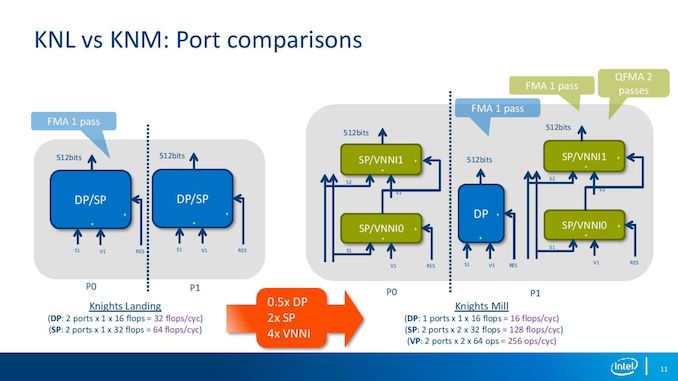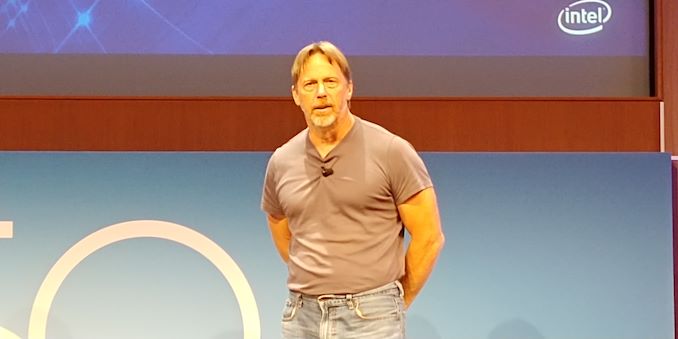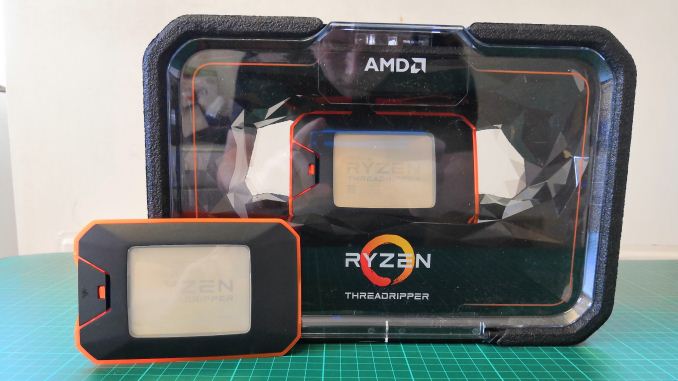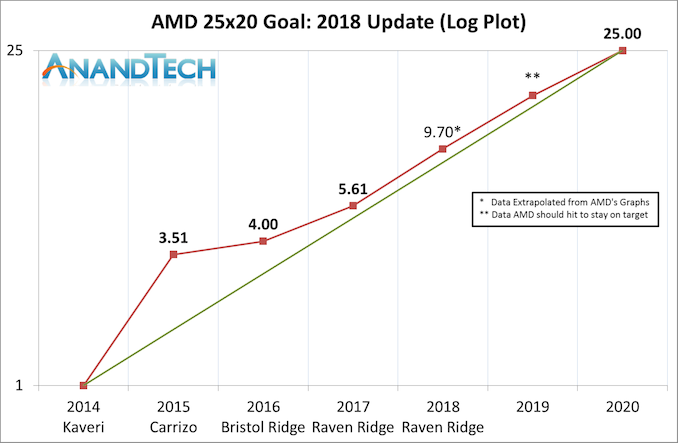AnandTech Year in Review 2018: CPUs
by Ian Cutress on December 27, 2018 3:30 PM ESTAnandTech Year in Review 2018: CPUs
July: Aquisitions, EOLs, Interviews
With the first half of the year gone, July was by comparison a quiet month. Intel announced that it had acquired eASIC, a company that it had already been working with for several generations to accelerate product development with structured ASIC technology. Ultimately given the level of interaction between the two, this wasn’t going to change much except afford synergy by integrating the facilities under a single banner.
Intel also put the penultimate nail into its Xeon Phi family, announcing that the Knights Landing range of processors would enter EOL phase with final orders by the end of August. This would leave only Knights Mill on the product portfolio, which is a minor tweak to the KNL layout designed to accelerate AI type compute workloads.
We also heard a firmer commitment from Intel on 10nm. The company stated that it will have systems on shelves using 10nm processors for the Holiday season in 2019. For users not in the US, that typically means the Christmas period / Q4 of 2019, after the back-to-school rush in September. A number of industry analysts are still skeptical about Intel’s ability to deliver, or if this version of 10nm is identical to the Cannon Lake parts that were shipping for revenue at the end of 2017.
For our Intel coverage this month, we had a review of the Xeon W platform, which is Intel’s commercial take on its high-end desktop processor line. These parts offer similar core counts to Skylake-X, but with support for ECC memory and require different motherboards. We tested the 18-core W-2195, the 10-core W-2155, the budget W-2123, and the two off-roadmap processors, the W-2104 and W-2102. This was all using the Supermicro X11SRA motherboard and Kingston RDIMMs.
On the back of our recent interviews of Intel’s senior staff, I had earlier in the year put requests in to get interviews with Raja Koduri, and as of his new employment status, Jim Keller. In July, 6-8 weeks after he started, Intel offered me an interview with Jim. In the interview we learned that he is more of a nuts and bolts engineer rather than a visionary, but the sense of scale at Intel is what drew him in (as well as working with Raja). I also recorded a video going over the interview, explaining some of the nuance to Jim’s answers and my overall commentary.
AMD was again relatively quiet during July by comparison. In its quarterly earnings call, AMD confirmed that its next generation EPYC processors, called ‘Rome’, would be manufactured at TSMC using that company’s 7nm process, rather than its current provider GlobalFoundries on their 7nm process. This was an interesting development as AMD had been reluctant to say anything about where it would be manufacturing its 2019 product lines on 7nm. This news leads into GlobalFoundries news in August.
August: 10nm, 7nm, and Hot Chips
While on the topic of GlobalFoundries, let’s start there. At the back end of August, GF confirmed that it was putting the brakes on all of its 7nm research and development, committing more to a future of 14/12nm parts as well as investments in its FDX platform. Along with this went the company’s research into EUV, with the potential of selling the two EUV machines it had purchased. The reason for this change, leaving only three companies on the leading edge of manufacturing technology (TSMC, Samsung, Intel), was because the company was looking to make money. They had stated in Q1 that its capacity at 14nm was already at maximum, so despite the volume, the company was still losing money due to the continued research into 7nm. This also coincided with the end of the company’s agreement with IBM to supply POWER and Z processors on custom nodes.
Staying on the more AMD side of things, as a plus we saw that AMD’s custom division scored a win with a special chip for the Chinese console market. With the codename ‘FireFlight’, AMD produced a quad-core Zen processor with 24 compute units of Vega, which found its way into the Subor Z+ PC/Console hybrid. This processor is substantially more powerful than the desktop APUs on the market (which top out at 11 compute units), and pushes into console market for sure. The chip cost an estimated $60m USD to research, and the Subor Z+ it is currently in was first launched as a PC with a full version of Windows, with a console version based on Windows 10 IoT sometime in Q4. We were able to get a unit, and are still looking to review it.
We also saw news of new AMD Ryzen processors coming into the market – the Ryzen 5 2500X and Ryzen 3 2300X were spotted on some Lenovo listings and looked ideal to take the place of the 1500X and 1300X currently at retail. However, we learned in September that these parts are set to remain OEM only for now.
On the downside, we also saw the departure of Jim Anderson from AMD. Jim was the General Manager of the Compute and Graphics Group, overseeing the launch of Ryzen and completely responsible for the company’s client computing business. He would often be on stage at announcements discussing the latest developments and design wins for the product lines. He took up a job as CEO of Lattice Semiconductor.
Lastly on AMD in August, we saw the launch of the Threadripper 2 family of processors. On day one we had a review of the 32-core 2990WX and the 16-core 2950X, both of which offer separate compelling arguments to be the high-end desktop processor of choice. The 2990WX has a bifurcated memory layout which actually hurts it in some tests, but for rendering it is the best processor on the market. The 2950X is a great all-rounder, and is by far the best HEDT processor for price/performance available. It scored our recommended spot in our Best CPUs for Workstations 2018.
Intel on the other hand held its Datacenter Summit in Santa Clara. At this event, we got a glimpse of Intel’s enterprise roadmap for the next few generations, including Cascade Lake, Cooper Lake, and Ice Lake. We learned that Cascade Lake will have some of the hardware mitigations for Spectre and Meltdown, along with extra instructions for AI and support for Intel’s Optane Memory DIMMs. Cooper Lake, still on 14nm, will introduce bFloat16 instruction support, again another AI tool, and Ice Lake will be on 10nm. As a result of the data summit, we spent some time with Lisa Spelman, the VP of Intel’s Datacenter Group, where we learned that half of all Skylake Xeon processors sold today are custom, and that with the fixes and manufacturing improvements, Cascade Lake will have better performance than Skylake-SP.
August also saw the annual Hot Chips event, one of my favorite of the year. We saw presentations about how companies like Google are approaching hardware security, new materials for carbon nanotube-based DRAM, Arm’s machine learning core, IBM’s Power9 Scale Up CPUs, and vector accelerators from Fujitsu and NEC, marking Arm’s entry into the server market with powerful accelerators.
September: Meeting Goals
AMD continued its high-octane news push into September. After IFA, we published a report on how AMD was faring in its public goal to increase the efficiency of its processors in 2020 by 25x compared to its processors in 2014, known as the AMD 25x20 goal. We’ve dived deep into how AMD calculates this metric, and the latest Ryzen APUs in 2018 show that AMD is currently at 9.7x of their goal. In order to hit 25x by 2020 seems like an impossible task at this rate, however this data point takes into account OEM implementation of idle states, so the company is still hopeful. They need to hit 16.2x in 2019 to stay on track at the current rate. By 2020, the company should be deep into Zen 3, the latest 7nm process, and its next generation GPU technology, all of which should offer substantial gains.
The company also officially announced several more Ryzen processors, including the 2500X and 2300X mentioned above, and 2700E / 2600E models for lower power at higher core counts. None of these seem to be retail components, however we do have data for the 2500X and 2300X that we’ve tested with our benchmark suite.
In Gavin’s testing of the AMD APUs, we posted his results on how the graphics performance increases as the frequency of the graphics is overclocked.
Intel’s news of the month relates to investment. At this time of the year, reports are trickling in that Intel is set to be unable to meet the increased demand of its 14nm processors, particularly the powerful high-core count Xeons for the server market, despite running its fabs at full rate. Intel states, and its financial reports show, that this is a demand increase, rather than a supply decrease. The company is making money hand over fist, but it needs to create as many processors as possible. As a result, during September the company reaffirmed its commitment to $15B CapEx for 2018, up from its initial report of $14B.
Also during September we saw reports of new x86 compatible CPUs coming out of China. Zhaoxin, a joint venture between the Chinese government and VIA, are using VIA’s x86 license to create custom parts for the home market. In this case, the JV showed its next generation 8-core processor running at 3.0 GHz using TSMC’s 16FF process node. The design isn’t expected to be a performance threat to Intel or AMD any time soon.















42 Comments
View All Comments
NetMage - Sunday, December 30, 2018 - link
This article seems to be missing any discussion of Apple, Qualcomm and Samsung and the mobile processor world?PeachNCream - Thursday, January 3, 2019 - link
Check the previously published mobile phone article. It has a bit of what you're looking for.StormyParis - Sunday, December 30, 2018 - link
Going through customs with a case of benchmarking gear must be FUN. No sirreeee, not a bomb I promise !Looking back at 2018 is fine. I'd be interested in advice going forward too: my PC is some old Core i5 on DDR3... I'm not quite sure if we've reached the "wow, that upgrade was worth it" point, which is, what, 2x performance for the same $150ish IIRC budget ?
Reviews usually only compare recent stuff, which leaves casual users like me, with a 5-10yrs upgrade cycle, kind of wondering. The yearly recap would be a logical place to have a long term, bird's eye view of what $50, $100, $250, $500 got/gets you then and now for CPU. And GPU.
DanNeely - Sunday, December 30, 2018 - link
If you're using a higher end GPU an older i5 will be a CPU bottleneck. I've got a friend with an i5-3xxx system, who recently upgraded to a 1080ti and 4k. A CPU/mobo/ram upgrade's now on his near term todo because his CPU is holding him back.mapesdhs - Wednesday, January 2, 2019 - link
That's not universally true, it depends on the game/task, and the higher the resolution & detail, the less the CPU matters so much, especially for DX12/Vulcan titles. It's best to check reviews, bench database info, etc. for the actual games one is going to play. Even so, the degree to which an older platform can or will hold back a newer GPU (or indeed SSD) often isn't as bad as many assume it will be. However, drivers and chipset support can complicate things. Still, one can get a hefty value upgrade without spending much if one just wants an interim solution until something new like Zen2, eg. used X79 and a 3930K/4930K is still very potent.There are also newer games which do run better with 4c/8t. Depends on the game.
mapesdhs - Wednesday, January 2, 2019 - link
EDIT: oops, I mangled that, I meant there are games which do run better with more than 4c/8t.StormyParis - Sunday, January 6, 2019 - link
My gaming days are over I replaced a dead vidcard with only a 1060, but a few ports on my current mobo seem to be flaky (ethernet and a few USB), so maybe I should renew the thing.I'm kind of waiting for hardware solutions to the cache exploits though, as well as hardware AV1.
jjjag - Sunday, December 30, 2018 - link
Clearly AT has turned in to yet another over-sensationalized media outlet, at least to the extent that any "tech news" can even be sensational, since it matters to so few people.All these stories about Spectre, Meltdown, CTS, etc. literally mean nothing. It affected no one. The only story here is that somebody finally "broke the code" after 20 years of trying to find an exploit in speculative execution. THAT is the cool part.
Here is your big news. AMD is poised to kick Intel's butt with huge-core offerings, while Intel falters badly deploying its 10nm. Will Intel respond? Will AMD really become relevant again? Intel plays the #metoo card to fire its CEO, and 6 months later still has not named a new chief. All the while,
ARM makes zero headway into PCs and servers, as previously promised for many years now. Hidden amongst all of this is the fact that there has been no real marked improvement to the devices that people mostly use -- laptops and 2-in-1s. Features, battery life, and performance really gained nothing this year.
Oxford Guy - Sunday, December 30, 2018 - link
"somebody finally 'broke the code' after 20 years of trying to find an exploit in speculative execution"You have no proof of that, only speculation.
Badelhas - Monday, December 31, 2018 - link
Why are you always so arrogant? You could make your point without being like that, you know?Cheers